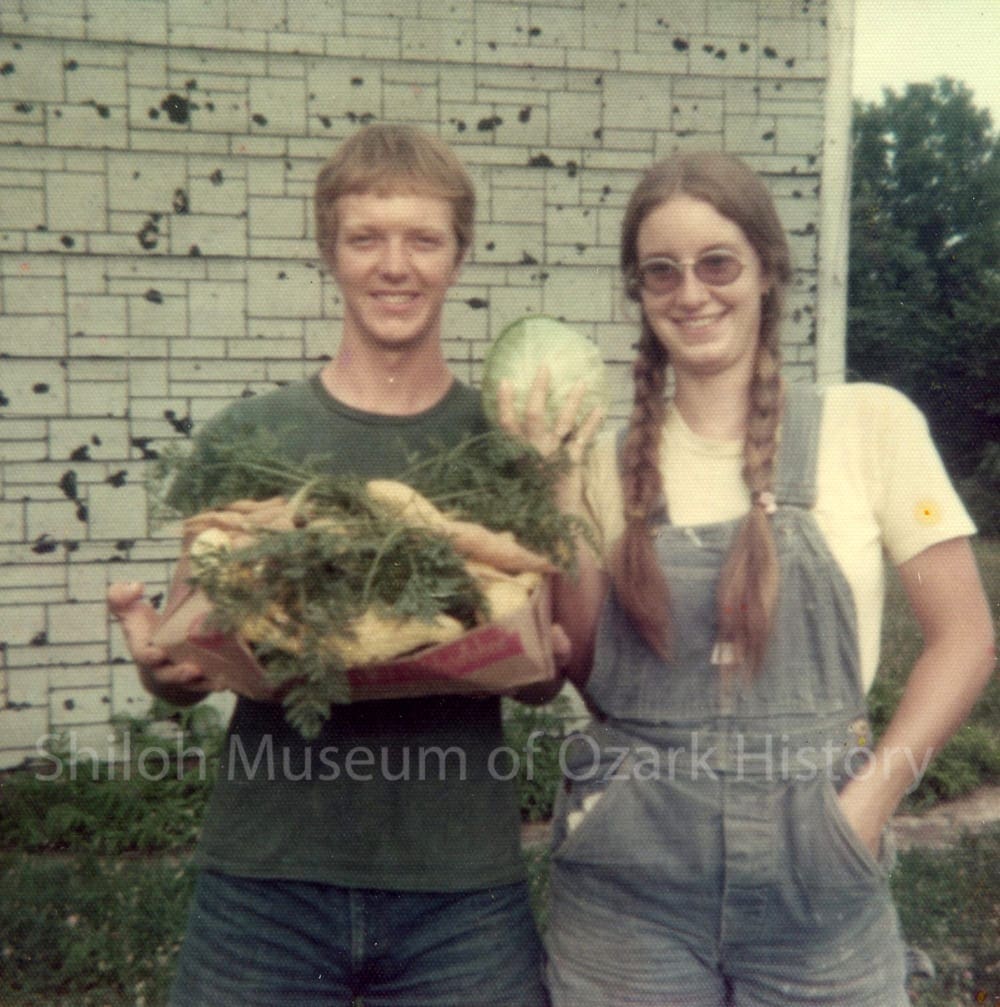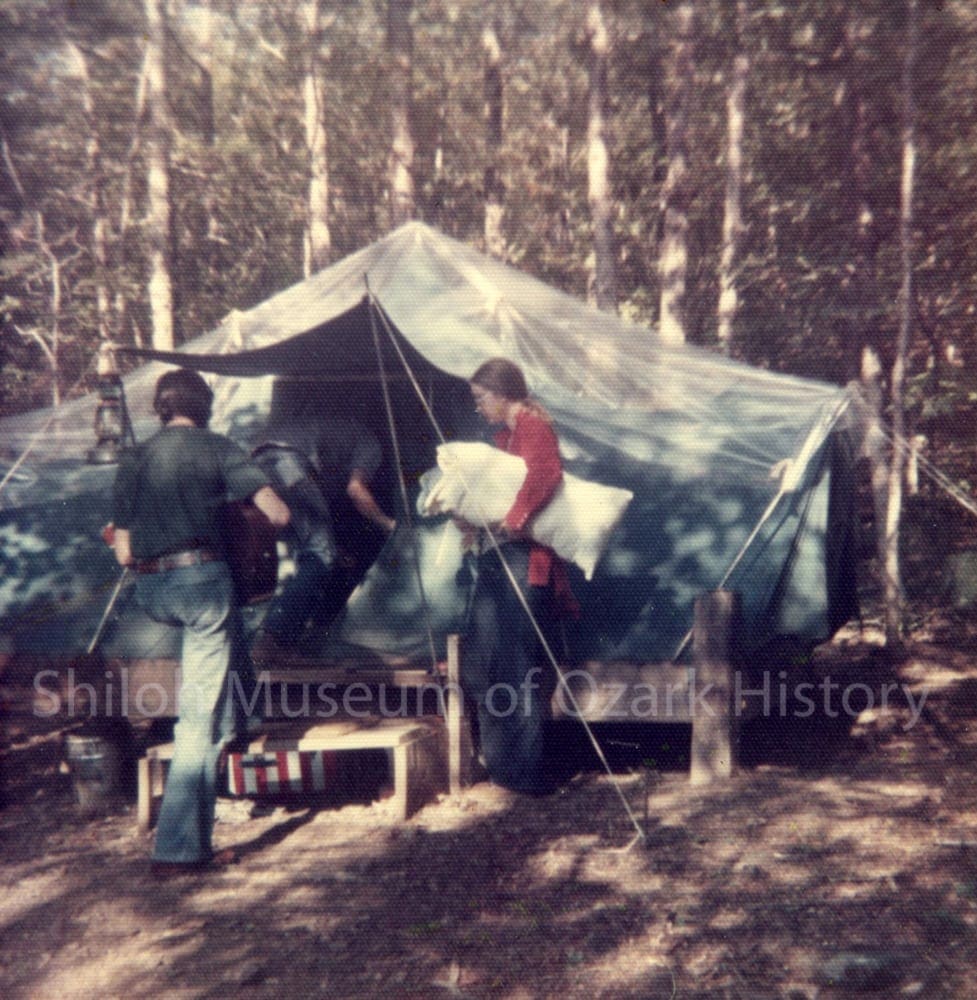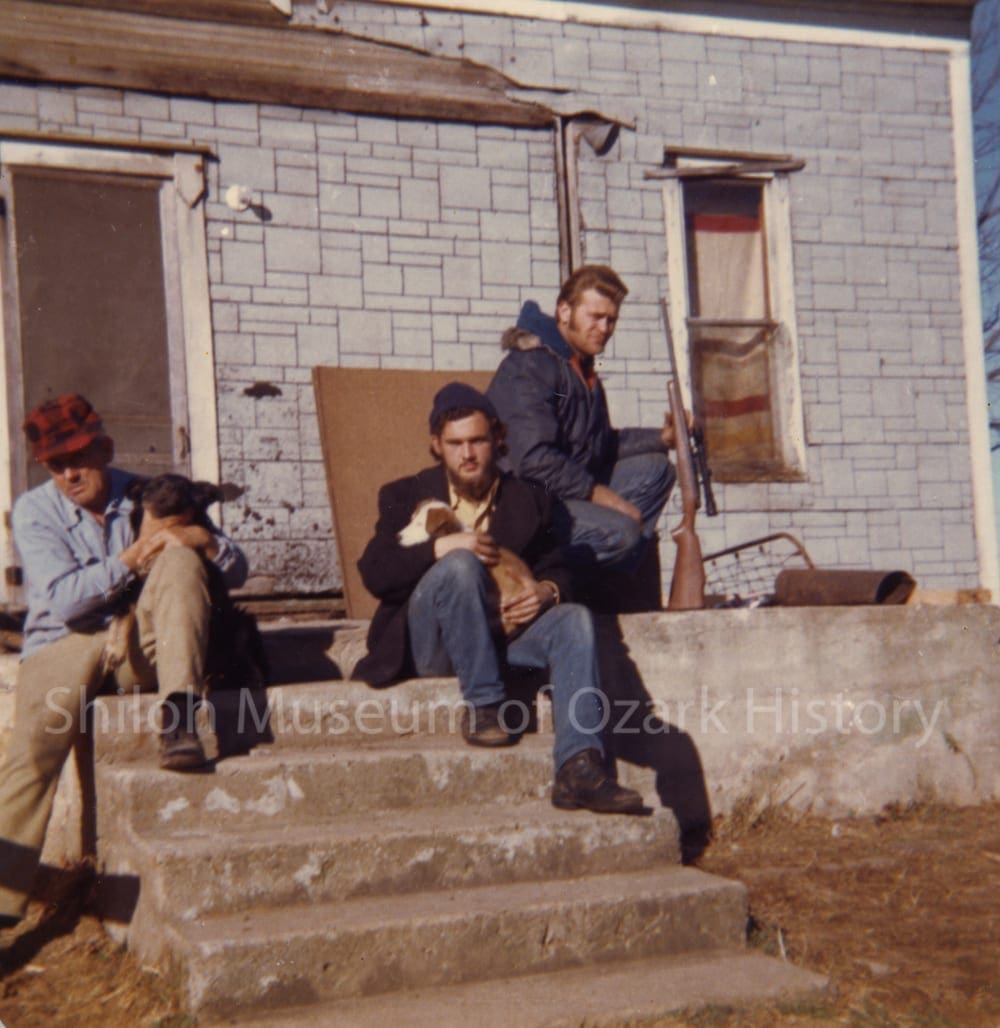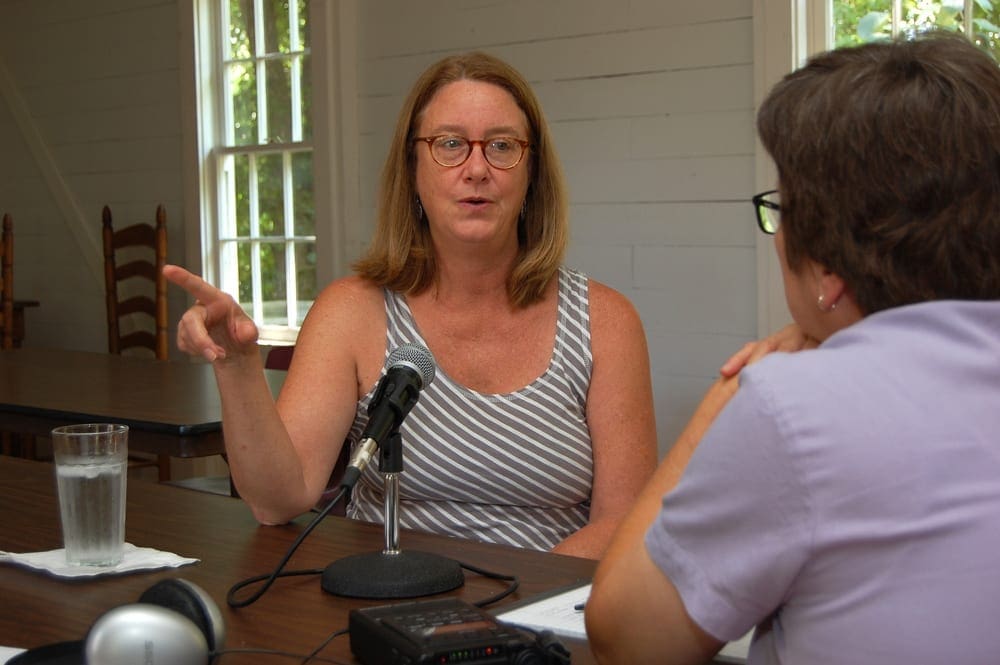
Back-to-the-landers Gary and Cindy Davidson with their homegrown turnips and cabbage, 1974. Courtesy Nancy Marshall
Living off the land was a necessity for the settlers who moved to Northwest Arkansas in the 1800s. They had to build shelter and farm in order to survive. But over the years there have been individuals and groups for whom self-sufficiency was a deliberate choice brought on by economic, political, or ideological reasons. Today urban and rural homesteading is in vogue, especially with a younger generation who want to live a DIY lifestyle.
To some degree these modern homesteaders are revisiting the back-to-the-land movement that stemmed from the counterculture revolution of the 1960s. Whether because of disillusionment with government or society, a need to return to basics, or some other reason, in the early 1970s young people began moving to rural areas in large numbers. There they attempted to build their own homes, grow their own food, and live simply. While some found success, for others their idealism and energy couldn’t overcome the challenges they faced.
When I was an undergrad at the University of Arkansas in Fayetteville I worked with another student on a small research project which recorded the oral histories of local back-to-the-landers. As I listened to their stories, I couldn’t imagine having the gumption to leave behind all that was familiar and comfortable for what would surely be a hardscrabble existence. Maybe that’s why I find back-to-the-land stories fascinating.
I’ve had the pleasure of knowing artist and business entrepreneur Cindy Arsaga for several years and was surprised to learn that she, too, once lived off the land in Northwest Arkansas. Recently she recorded an oral history interview with museum outreach coordinator Susan Young. Cindy also shared photos from her friend and fellow homesteader, Nancy Sullivan Marshall.
Shortly after Cindy Cadwallader graduated from Central High School in Little Rock in 1972, she married Gary Davidson. They and a group of like-minded friends lived together in a house in North Little Rock. Most of them considered themselves born-again Christians.
Our idea was to buy some land and build a house on it and make a commune. . . . I was just 18 years old and everybody else was roughly the same age so we were…young and looking for what we wanted to do next. . . . We just didn’t want to live like everybody else did. We wanted to do something different.
That winter they made plans and gathered supplies. A friend told them about inexpensive land in Madison County, a place which was then attracting many back-to-the-landers. In the spring of 1973 Cindy and Gary loaded everything they owned into a 1954 Chevy truck and drove up the Pig Trail (Highway 23) to a 40-acre parcel of land just off of Slow Tom Mountain Road, near Witter.

This was home sweet home for Gary and Cindy Davidson when they moved to Madison County, Arkansas, in 1973. Courtesy Nancy Marshall
Together with friends Dawn and Robbie Carder, Nancy and Tim Sullivan, and John Toliver they built platforms for tents, cooked over an open fire, and got to know their neighbors. While the men built a foundation for a house, the women traveled daily to Fayetteville to work at Brough Commons, the main dining hall on the University of Arkansas campus. And then fall came.
It was starting to get cold. I think about November [neighbor Glen Haught] came walking down the hill one day. . . . [H]e sat down and said, “You guys are going to freeze. You have to come live in my house with me.” We couldn’t believe that he would want all of us and the dogs and cats . . . but he did. So we eventually loaded all of our stuff up and moved into Glen’s house and spent the winter with him.
Now you might think that there would be a clash between young hippies and old-time rural farmers, but that wasn’t so in Cindy’s case.
Those people just took us under their wing. They loved it that we were there. . . . I’m sure they thought that we were crazy but they . . . were never mean to us. They were so sweet to us. They wanted to help, they wanted us to not freeze. They wanted to teach us their ways, ‘cause we were interested and their kids all moved away. . . . So I think they were just amazed that we were there and that we really cared about it. They embraced us, we embraced them. We loved them. They were great.

From left: Glen Haught, John Toliver, and neighbor Lester Estep outside of Glen’s home, 1973-1974. Courtesy Nancy Marshall
Cindy appreciated her neighbors’ resourcefulness and open-heartedness. Generations earlier, Glen Haught’s kinfolk helped settle the area in the 1800s. In many ways Glen and his neighbors were already living the back-to-the-land lifestyle. Maybe that’s why the two groups didn’t clash.
They lived on next to nothing and they were just as happy with that as anybody could be. They didn’t need a lot; they got a lot from the land. They just connected with people in such an open, charming way. . . . They told us everything they could. They filled us up with all their information and taught us how to raise chickens and taught us how to have a garden and how to hunt ginseng.
In the spring they planted a garden at Glen’s house but the stress of their lifestyle was taking its toll. The group was breaking apart. In part it was because of their Christianity—some people were more into it than others. But relationships were strained, too. These young couples were living a hard life at the same time they were learning to live with each other. And the isolation of rural Madison County didn’t help. In the end their back-to-the-land commune wasn’t working. People started to leave. Cindy and Gary were the last to go, moving to a more conventional life in Fayetteville late in the summer of 1974.
It was just such a relief to be back among people. . . . I was ready to start my life. And it wasn’t going to be living in the woods in Madison County. But that had been such a formative experience that I felt enabled to go out into the world and do something. And I think it was just from having done that and accomplished it and lived through it. . . . I think it was all about growing up.
Marie Demeroukas is the Shiloh Museum’s photo archivist and research librarian.


0 Comments